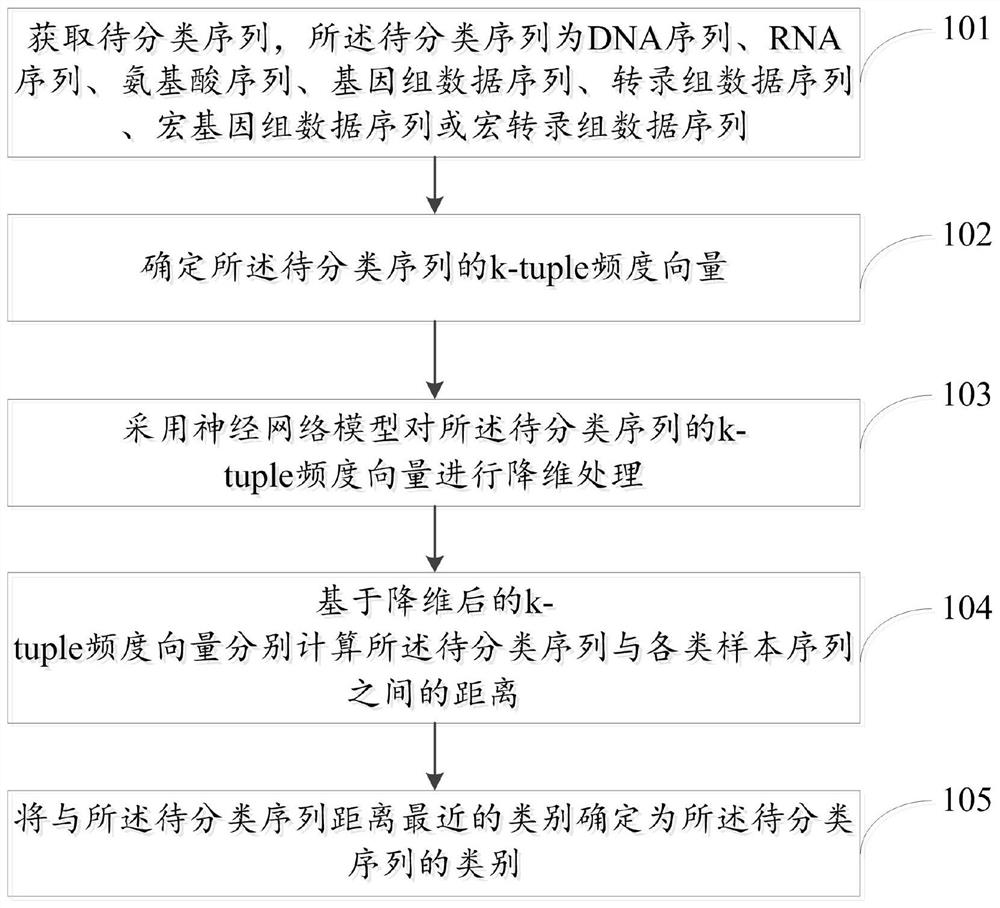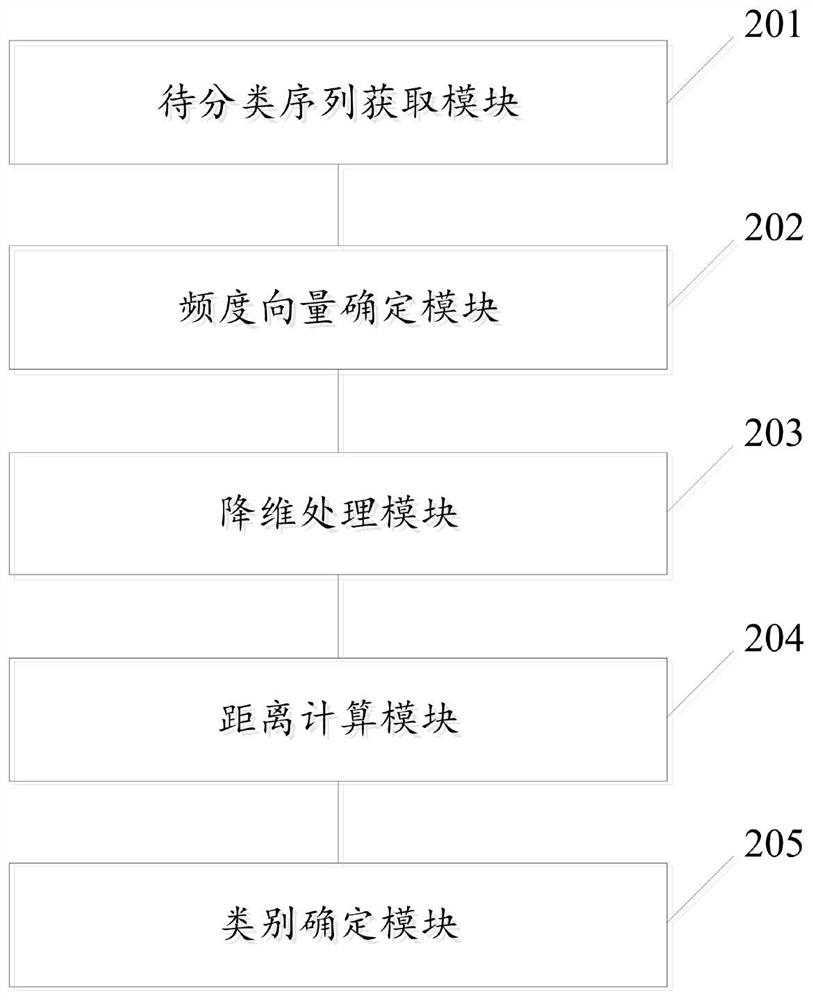A method and system for species biological classification based on triplet neural network
A neural network and classification method technology, applied in the field of species classification, can solve the problems of complex model results, long preprocessing and learning time, etc., and achieve the effect of convenient and fast calculation, low computing power requirement, and fast processing speed
- Summary
- Abstract
- Description
- Claims
- Application Information
AI Technical Summary
Problems solved by technology
Method used
Image
Examples
Embodiment approach
[0065] As an implementation manner, step 102 specifically includes:
[0066] Determine the frequency a of k-tuple j appearing in the sequence to be classified j , where j=1,…,4 k , k is the length of tuple, 4 k is the number of tuples;
[0067] The k-tuple frequency vector of the sequence to be classified is determined as
[0068] For example, for a DNA sequence G, use a sliding window of length k to scan the entire DNA sequence from beginning to end, calculate the number of times (frequency) that k-tuple appears in the entire DNA sequence, and obtain the k-tuple frequency vector.
[0069] As an implementation manner, before step 102, this embodiment also includes: training the neural network model. As an optional implementation manner, the training method of the neural network model includes:
[0070] Build three identical neural networks with weight sharing;
[0071] Obtain a sample sequence; the sample sequence includes several sequences in each category;
[0072] ...
PUM
 Login to View More
Login to View More Abstract
Description
Claims
Application Information
 Login to View More
Login to View More - R&D
- Intellectual Property
- Life Sciences
- Materials
- Tech Scout
- Unparalleled Data Quality
- Higher Quality Content
- 60% Fewer Hallucinations
Browse by: Latest US Patents, China's latest patents, Technical Efficacy Thesaurus, Application Domain, Technology Topic, Popular Technical Reports.
© 2025 PatSnap. All rights reserved.Legal|Privacy policy|Modern Slavery Act Transparency Statement|Sitemap|About US| Contact US: help@patsnap.com


